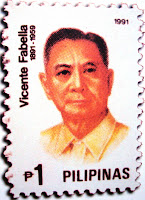The National Anthem of South Korea
Ahn Eak-Tai was a a Korean classical cellist, composer and conductor. While studying in the United States, Ahn heard the first Korean national anthem which was based on a Scottish Song "Auld Lang Syne". He thought that the tune was unfit for an anthem, and decided to compose a new national anthem for Korea.
From humble beginnings, he became a famous conductor giving performances in the United States and Europe. In one of the social gatherings in Spain, he met Lolita Talavera, an ardent fan who later became his wife. They lived on the island of Majorca where Ahn founded The Palma de Mallorca Symphony Orchestra.
First performed in 1896, the anthem was well-known by all Koreans by 1910. At this time, the song was usually sung to a Scottish folk song, "Auld Lang Syne", as well as occasionally to other music. In that year, the Japanese invaded Korea, and banned the anthem. However, it was still popular with Koreans abroad as a yearning for national independence.
In 1937 composer Ahn Eaktay wrote the music that's currently in use for the anthem (he wanted the song to have a Korean melody and not that of a folk song of a foreign nation). It was adopted by the government in exile and then, when South Korea was founded in 1948, three years after the Japanese occupation ended, it was officially adopted by that government. The lyrics were written by Yun Ch'i-Ho or An Ch'ang-Ho.
From humble beginnings, he became a famous conductor giving performances in the United States and Europe. In one of the social gatherings in Spain, he met Lolita Talavera, an ardent fan who later became his wife. They lived on the island of Majorca where Ahn founded The Palma de Mallorca Symphony Orchestra.
First performed in 1896, the anthem was well-known by all Koreans by 1910. At this time, the song was usually sung to a Scottish folk song, "Auld Lang Syne", as well as occasionally to other music. In that year, the Japanese invaded Korea, and banned the anthem. However, it was still popular with Koreans abroad as a yearning for national independence.
In 1937 composer Ahn Eaktay wrote the music that's currently in use for the anthem (he wanted the song to have a Korean melody and not that of a folk song of a foreign nation). It was adopted by the government in exile and then, when South Korea was founded in 1948, three years after the Japanese occupation ended, it was officially adopted by that government. The lyrics were written by Yun Ch'i-Ho or An Ch'ang-Ho.
When Ahn died in 1965, his Spanish wife inherited the copyright to the Korean national anthem, "Aegukka" (Patriotic Song) . The Ahn family had been receiving roughly US$ 5,600 a year from the Korea Music Copyright Association for playing the anthem before major sports events and broadcasts.
Because of insistent calls by the Koreans on why they have to pay royalties everytime the Korean anthem is used, the government decided to buy the copyright. But in a show of nationalism and respect, Mrs. Lolita decided to give back the anthem to the Koreans free of charge and with no conditions. The Ahn family was awarded a plaque of appreciation which read "This plaque presents with sincere gratitude of the Korean people and our wishes that the strong emotions and hopes of the Korean National Anthem will always be with us".
The Ministry of Information and Communication of Korea has been issuing the Millenium Stamp Series since 1999 in a project designed to honor the achievements of prominent Koreans while greeting the new millenium in a meaningful way. The 10th and final batch (a block of 6 stamps which included Ahn Eak-Tae in 170 won denomination), issued on 2 April 2001, featured historic events and figures who led the struggle to reclaim national integrity.









